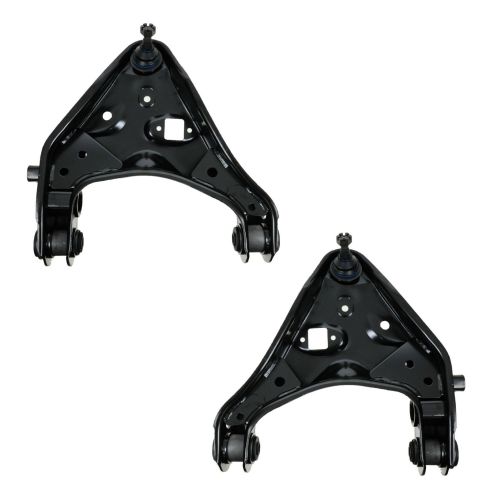1ASFK00081-Ford Mazda Mercury Front Driver & Passenger Side Lower 2 Piece Control Arm with Ball Joint Set TRQ PSA62153

Replaces
Ford Mazda Mercury Front Driver & Passenger Side Lower 2 Piece Control Arm with Ball Joint Set TRQ PSA62153

Product Reviews
Loading reviews
4.77/ 5.0
13
13 reviews
Wonderful
February 22, 2017
Speedy shipping and a great fit. Couldn't be better
Great Price Great Service
February 24, 2017
I ordered the parts plus a second order for the rest of the front end parts. its almost two month later and no problems. The prices are great and the service is excellent.
Worked just as advertised!
August 8, 2017
The parts fit perfectly and the video provided by 1A was very helpful. The only reason I didn't give this purchase 5 stars is because the grease fittings for the ball joints both faced the wheels when they were installed which will make future grease application a challenge due to space constraints. In fact, I had to purchase separate grease fittings with 90 degree bends in order to use a grease gun in the confined space.
April 16, 2018
A1 Auto parts was cheaper to purchase then in home town, it shipped fast and fit perfect
Quality Parts
January 16, 2019
High quality parts, exact match to original parts and awesome final result! Watch the 1AAUTO videos!
March 2, 2019
They are exact Fit.
Em fit
April 21, 2019
Clunk fixed, direct replacement
Absolutely amazing
June 14, 2019
I called in I ordered my parts the person who assisted me was very helpful and courteous it was a wonderful experience will definitely be ordering parts again when needed I support staff was very helpful
Ball joint
July 15, 2019
Great price and fast delivery. I put then on myself with no problem!
Mazda B3000
October 6, 2019
The control arm was an exact replacement.
Good
December 25, 2020
Everything fit perfectly. The only issue i had was having to replace bushings on my passenger side upper control arm because it is a two piece and the package only comes with one piece. Also the driver side lower ball joint is the only one that came with a grease fitting (that i have to get a different size for) and the rest cane pre-greased
The Right Part
May 14, 2022
As shown, it all worked great. Only difference was the lower control arm doesnt have a zerk fitting like it did in the install video
October 11, 2023
Worked great!
Customer Q&A
Are the ball joing pre greased or not?
February 22, 2019
10
The ball joints will be pre-greased.
February 22, 2019
Peter L










